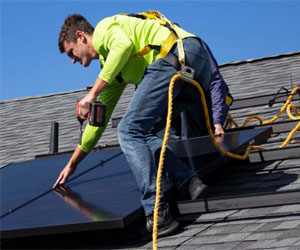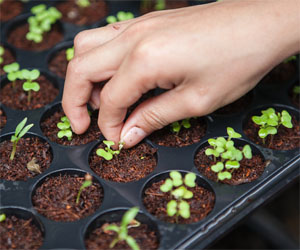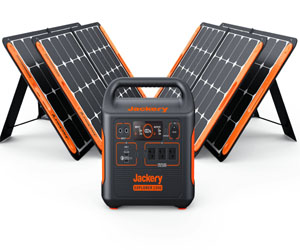


Bringing Sunshine To Your Home

As the world continues its shift towards sustainable energy sources, solar installation has gained significant popularity. Harnessing the power of the sun is not only eco-friendly but also financially savvy. In this article, we'll explore the process and benefits of solar installation, shedding light on how you can bring sunshine to your home.
The Solar Installation Process
Solar installation involves mounting photovoltaic (PV) panels on your property to capture sunlight and convert it into electricity. The process typically consists of several steps:
Site Assessment: The first step in solar installation is to assess your property's suitability for solar panels. Factors like available sunlight, shading, and the condition of your roof are evaluated. A south-facing roof with minimal shade is ideal.
Design And Planning: After the assessment, a solar system is designed based on your energy needs and the available space. The number and arrangement of solar panels are determined to maximize energy production.
Permitting: Before installation can begin, you'll need to obtain the necessary permits and approvals from local authorities. Your solar installation company can assist you with this process.
Installation: The solar panels and associated equipment, such as inverters and racking, are installed on your roof or property. The panels are securely mounted to ensure they can capture the maximum amount of sunlight.
Connection To The Grid: In many cases, residential solar systems are connected to the grid. This allows excess energy to be sent back to the grid in exchange for credits or compensation.
Testing And Inspection: Once the installation is complete, the system is thoroughly tested to ensure it's working correctly. Inspections may also be required to verify compliance with local regulations.
Monitoring And Maintenance: After installation, your solar system will be monitored to track its performance. Routine maintenance, such as cleaning the panels and checking for any issues, will be necessary to keep the system running efficiently.
Benefits Of Solar Installation
Reduced Energy Bills: Solar installation can significantly reduce your electricity bills. By generating your electricity from sunlight, you'll rely less on traditional utility providers.
Environmental Benefits: Solar power is a clean and renewable energy source. It reduces your carbon footprint and helps combat climate change.
Energy Independence: Solar installation provides a degree of energy independence. You're less reliant on the grid, which can be particularly beneficial during power outages.
Increased Property Value: Homes with solar panels are often more attractive to buyers, potentially increasing your property's value.
Government Incentives: Many governments offer incentives, tax credits, and rebates to encourage solar installation, making it a more affordable option.
Long-Term Investment: Solar panels have a long lifespan and require minimal maintenance, making them a sound long-term investment.
Solar installation offers a bright future for homeowners looking to embrace sustainable energy solutions. It not only benefits the environment but also your finances. If you're considering solar installation, consult with a reputable solar installation company to assess your property's suitability and explore the options available to you. By bringing sunshine to your home, you can enjoy cleaner, cheaper, and more sustainable energy for years to come.
Strategies And Implications
 Higher yields in agriculture refer to the increased production of crops, livestock, or other agricultural products per unit of land, water, or other resources. This increase in productivity is essential for several reasons:
Higher yields in agriculture refer to the increased production of crops, livestock, or other agricultural products per unit of land, water, or other resources. This increase in productivity is essential for several reasons:
1. Food Security: With a global population that continues to expand, the need for increased food production is evident. Higher yields help ensure that there is enough food to feed everyone.
2. Economic Growth: Agriculture is a significant driver of economic growth in many countries. Higher yields can boost rural economies, create jobs, and increase income for farmers and agricultural businesses.
3. Environmental Sustainability: Efficient farming practices that result in higher yields can help reduce the environmental impact of agriculture. By producing more food with fewer resources, we can minimize habitat destruction, water usage, and greenhouse gas emissions.
Strategies For Achieving Higher Yields
Numerous strategies and technologies contribute to higher yields in agriculture:
1. Improved Crop Varieties: Developing and adopting high-yielding crop varieties through selective breeding and genetic modification is a primary strategy. These varieties are often more disease-resistant and better suited to specific environmental conditions.
2. Precision Agriculture: The use of technology, such as GPS, sensors, and data analysis, allows farmers to make precise decisions about planting, irrigation, and fertilization. This optimizes resource use and boosts yields.
3. Sustainable Practices: Techniques like crop rotation, reduced tillage, and cover cropping can improve soil health and enhance crop yields while minimizing environmental harm.
4. Efficient Water Management: Implementing water-saving irrigation methods like drip or sprinkler systems can help maintain optimal soil moisture and boost crop yields.
A Sustainable Future
 Defining Environmentally Friendly Homes
Defining Environmentally Friendly Homes
Environmentally friendly homes, often referred to as eco-friendly or green homes, are constructed and operated with a focus on reducing their impact on the environment. These homes adopt a holistic approach to sustainability, addressing various aspects of the building's design, construction, and operation. The goal is to minimize resource consumption, reduce energy usage, and limit greenhouse gas emissions.
Key Features Of Environmentally Friendly Homes
Energy Efficiency: Environmentally friendly homes prioritize energy efficiency through measures like well-insulated walls, roofs, and windows. They often incorporate high-efficiency heating and cooling systems and utilize energy-efficient lighting and appliances to reduce energy consumption.
Renewable Energy Sources: Many eco-friendly homes feature renewable energy sources such as solar panels, wind turbines, or geothermal heating and cooling systems. These technologies allow homeowners to generate their own clean energy and even feed excess energy back into the grid.
Water Efficiency: Water conservation is a critical component of environmentally friendly homes. Features like low-flow faucets, water-efficient appliances, and rainwater harvesting systems help reduce water consumption and lower utility bills.
Sustainable Materials: The construction of these homes often relies on sustainable and recycled materials, such as reclaimed wood, bamboo flooring, and recycled metal. This not only reduces the demand for new resources but also minimizes waste.
Indoor Air Quality: Environmentally friendly homes prioritize indoor air quality through the use of non-toxic and low-VOC (volatile organic compounds) paints and finishes.
Turning Scraps Into Garden Gold
 Suppresses Plant Diseases: Compost contains beneficial microorganisms that can help prevent soil-borne diseases and reduce the need for chemical pesticides.
Suppresses Plant Diseases: Compost contains beneficial microorganisms that can help prevent soil-borne diseases and reduce the need for chemical pesticides.
Reduces Waste: Composting diverts kitchen and yard waste from landfills, reducing the production of harmful methane gas and lessening the burden on waste disposal systems.
Getting Started With Composting
Select A Composting Location: Choose a suitable spot in your garden or yard for your compost bin or pile. It should be well-drained and accessible for regular turning.
Collect Compostable Materials: Gather kitchen scraps (fruit and vegetable peels, coffee grounds, eggshells), yard waste (leaves, grass clippings, small branches), and other organic materials (paper, cardboard). Avoid meat, dairy, and diseased plants, as these can attract pests and pathogens.
Layer The Materials: Alternate between green (nitrogen-rich) and brown (carbon-rich) materials in your compost pile. This balance provides the right C:N ratio (carbon to nitrogen) for efficient decomposition.
Aerate And Turn: Regularly turn your compost pile with a pitchfork or aeration tool to introduce oxygen and promote decomposition. A well-aerated pile minimizes unpleasant odors and speeds up the composting process.
Maintain Moisture: Keep your compost pile moist but not waterlogged. If it becomes too dry, it won't decompose effectively. If it's too wet, it can become smelly and anaerobic.
Monitor Temperature: A well-working compost pile will generate heat as microorganisms break down the organic matter. This is a sign that your compost is active and efficient.






Creative Solutions For Limited Space
 1. Embrace Vertical Space
1. Embrace Vertical Space
One of the most effective ways to increase storage in a small home is by utilizing vertical space. Install tall bookshelves, wall-mounted cabinets, and floating shelves. These not only provide additional storage but also draw the eye upward, creating a sense of height and spaciousness.
2. Multifunctional Furniture
Invest in furniture that serves multiple purposes. Sofas with hidden storage, beds with built-in drawers, and coffee tables with lift-up tops are just a few examples of multifunctional pieces that can help you declutter your space. These items provide hidden compartments for your belongings, reducing the need for extra storage units.
3. Underutilized Spaces
In small homes, every nook and cranny counts. Look for underutilized spaces, such as the area under the stairs, beneath the bed, or inside closets. These spaces can be transformed into storage solutions like built-in shelves, pull-out drawers, or hanging racks.
4. Declutter Regularly
Living in a small home requires a commitment to decluttering regularly.
A Cleaner, Safer, And Happier Living Space
 Improved Indoor Air Quality: Traditional cleaning products often release volatile organic compounds (VOCs) that can lead to poor indoor air quality. These can cause respiratory problems, allergies, and other health issues.
Improved Indoor Air Quality: Traditional cleaning products often release volatile organic compounds (VOCs) that can lead to poor indoor air quality. These can cause respiratory problems, allergies, and other health issues.
Allergen Reduction: Effective cleaning methods can help reduce allergens like dust mites, pet dander, and pollen, which can trigger allergies and asthma.
Prevention Of Mold And Mildew: Regular cleaning can help prevent the growth of mold and mildew, which can lead to respiratory problems and other health concerns.
Safer Living Environment: Cleaning without harsh chemicals reduces the risk of skin irritations, chemical exposure, and other health risks associated with chemical cleaning products.
Methods For Achieving Healthy Home Cleaning
Choose Natural And Non-Toxic Cleaners: Opt for natural cleaning solutions or non-toxic cleaning products that are free from harsh chemicals. Vinegar, baking soda, and lemon juice are great natural alternatives for many cleaning tasks.
Regular Cleaning: Establish a consistent cleaning routine to prevent the buildup of dirt, dust, and allergens. Regular dusting and vacuuming can go a long way in maintaining a clean and healthy home.
Ventilation: Ensure proper ventilation during and after cleaning to disperse any airborne particles. Open windows and doors to let fresh air circulate.
Reduce Clutter: A clutter-free home is easier to clean and reduces hiding spots for dust and allergens.
Use High-Quality Cleaning Tools: Invest in high-quality cleaning tools such as microfiber cloths and mop heads, which can effectively capture and remove dirt and dust.
Consider HEPA Filters: If you have respiratory issues or allergies, using a vacuum cleaner with a HEPA filter can help trap small particles and allergens.